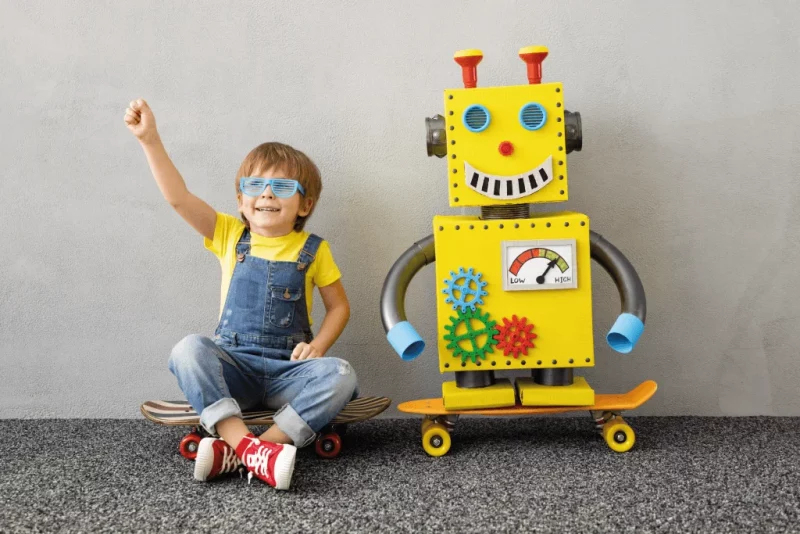When it comes to emotions, we often use these terms interchangeably, but they actually have distinct meanings.
In this article, we will explore the differences and similarities between emotional education and emotional intelligence, and how you can apply them with young children using our digital table: KIDS’TABLE.
What do these concepts have in common?
Both emotional intelligence and education emphasize the importance of developing social and emotional skills.
When it comes to putting them into practice, we find that they are similar in application, and they complement each other, enriching the overall development of children.
With KIDS’TABLE, children can practice these socio-emotional skills through more than 150 educational and enjoyable games. These help them manage challenging emotions like frustration and impulse control.
Emotional education vs. emotional intelligence
Emotional education
It is a continuous learning process that focuses on developing knowledge and skills related to emotions. The objective is to empower individuals to better handle the daily challenges they face.
According to psychologist and educator Rafael Bisquerra, emotional education is an “essential and ongoing educational process that aims to enhance emotional development as an indispensable complement to cognitive development. Together, they form the core elements of holistic personality development”.
Objectives of emotional education
The objectives of emotional education are centered around emotional competencies including:
- emotional autonomy
- emotional regulation
- emotional awareness
- social competence, which involves understanding and managing emotions in oneself and with others.
- life skills and well-being
The interactive games offered by KIDS’TABLE assist children in developing their emotional education. These games do not provide explicit instructions, penalties, or rewards. Instead, children must explore and understand the games on their own. This active involvement helps them develop emotional autonomy, self-control, and self-esteem, while gaining a deeper understanding of themselves.
Emotional intelligence
The concept of emotional intelligence, as defined by its creators Mayer and Salovey, refers to the ability to perceive, understand, and manage emotions effectively. It involves recognising and applying emotions in one’s own thoughts and actions.
While emotional intelligence is a skill that develops over time, why not start nurturing it from an early age?
KIDS’TABLEis specifically designed for children aged 3 to 9. Through its educational games, which make learning fun, children can begin developing their emotional intelligence from a young age.
Objectives of emotional intelligence
The objectives of emotional intelligence include:
- emotional perception: learning to recognise, evaluate and express one’s own emotions and the emotions of others.
- emotional assimilation: considering feelings when reasoning or problem-solving.
- understanding emotions in oneself and others.
- regulating emotions to promote emotional and intellectual growth.
KIDS’TABLE: Learning through play
Learning through play is a very effective teaching method. With it, children can develop their emotional education or intelligence in a fun and nurturing way. This approach equips them with valuable tools for their future.



